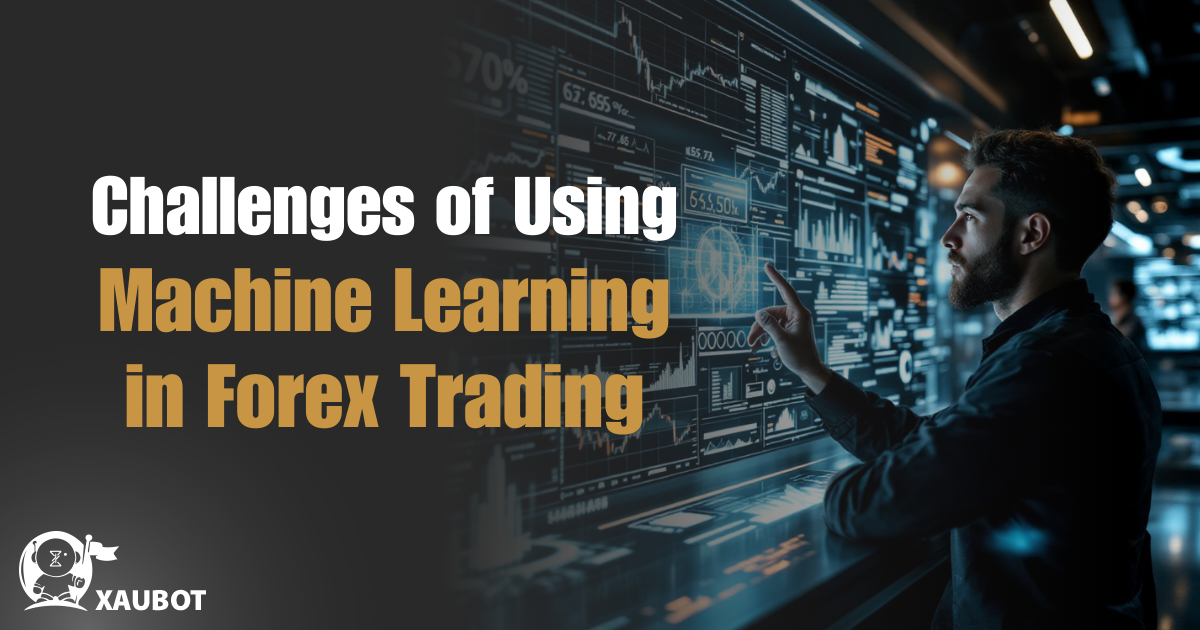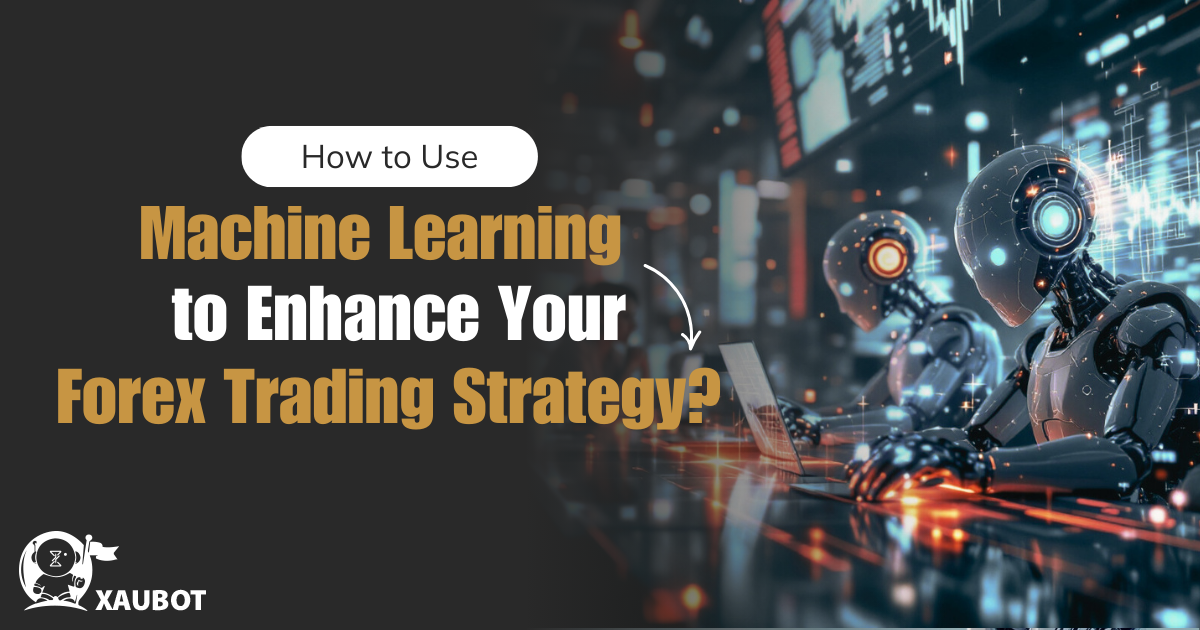Machine learning is the process of feeding an AI system data and then have it analyze it, learn from it, process it, and act according to that data. This whole idea can work greatly in financial markets, especially the forex market. This is exactly why the use of machine learning in forex trading can hugely enhance your trading strategy and trading results. In this article, we are going to take a closer look at machine learning in forex and how you can begin using it yourself.
Understanding Machine Learning in Forex Trading
The first step to understanding how you can use machine learning to your benefit in forex trading is to understand machine learning itself. It is essential because you need to know why machine learning and forex are a good match together!
The reason it is such a good idea to use machine learning in forex trading is that machine learning is the closest thing we have to a human brain.
But how?
As you know machine learning is a subset of artificial intelligence. In machine learning, we use datasets in order to train an AI system to learn something and be able to use that information to make decisions later and process other data.
This is very much like a human brain. We receive data as input, and it can be any form of data, including sensory, visual, auditory, and conscious learning. Then we train ourselves and our brain using all of this data. We then use this learning in order to make decisions later and process other data better.
So, in the case of forex trading, we can transfer learning from our brain to a machine learning system.
This means, instead of spending countless hours and even in fact years in order to hone our trading skills, reading, gaining trading experience, going over books, etc., we can train an AI system with machine learning.
This process is much faster and much more efficient. Because unlike a human brain, an AI system using machine learning only needs to learn what we want it to learn and nothing else.
Therefore, we can feed a machine learning algorithm with endless datasets related to the forex market, including historical market records and data. We can feed it data about all the technical indicators. We can feed it news events. There really is no limit. Just feed it with data and it will learn from that. The final product is a machine learning algorithm that is perfectly adapted to understand the forex market and price movements.
How Machine Learning Can Enhance Forex Trading
We talked about the general advantage of machine learning for forex trading. Now let’s go through the details of how machine learning can be a breakthrough for forex traders.
Predictive Analysis and Forecasting
Trading models that use machine learning can be extremely good at predicting price movements. Because they have been trained on huge amounts of historical market data, so they can better identify when a trend is forming and when a trend is changing. These all help with predicting price movements in the future.
This feature is directly related to buy and sell signals. This way a machine learning model can tell you exactly when to buy and when to sell.
Algorithmic Trading
Of course, the biggest use of machine learning is in algorithmic or automated trading. This way we have a very smart software or algorithm that is perfectly adapted to trading in the forex market. But this is not just your normal “bot” that can be found everywhere. This is like an automated trading system but on steroids!
This is because in the case of normal automated trading systems, we have an algorithm that has been developed previously and makes decisions based on its algorithm.
But an algorithm that uses machine learning never stops learning. It will constantly keep getting better.
Risk Management
Another area where machine learning can be greatly beneficial for forex traders is risk management.
But it’s too hard to keep track of everything when it comes to risk management. No matter how careful and smart you are, something will eventually slip.
But with the help of machine learning models, we can train AI systems that can monitor the market constantly and keep track of anything that is related to risk management. This way, we can have a comprehensive and precise automated risk management system that can minimize any and all risks while maximizing our chances for profits.
Sentiment Analysis
This is an area that is currently considered as the next breakthrough in automated trading in forex.
Look, we already have automated trading systems, which are expert advisors or trading bots and such. But there is a limitation that these systems have and that is sentiment analysis.
While some of them might be able to analyze sentiment through other factors, they are not really able to analyze sentiment like a human would do.
But with the help of machine learning models, we can have trading systems that can actively scan social media, news articles and bulletins, and any other source available and be able to analyze trader and user sentiment in real time.
Steps to Implement Machine Learning in Your Forex Trading Strategy
So, we learned that machine learning can be used in many different ways and aspects to help improve your forex trading.
Companies and developers are currently working on systems and platforms that use machine learning to trade in the forex market. But you can take action yourself and begin using this amazing technology to enhance your forex trading.
Step 1: Gather Data
The very first step in developing any machine learning model, no matter how simple or advanced, is to feed it with data. This is also know as training the model.
So, for this purpose, you need to gather and collect a dataset for your own purpose. So, in the case of the forex market, you will need to gather data related to the currency pairs that you want to trade. You will also need to gather other data that are related to forex trading such as technical analysis in the form of indicators.
Keep in mind that there are also platforms that sell such data for machine learning models.
Step 2: Choose a Machine Learning Model
The next step is to choose a model for your machine learning system. There are several choices that you can have and it all depends on your aims for the machine learning model. The are the most common models:
- Linear regression
- Decision trees and random forests
- Neural networks
This of course requires you to have a certain amount of experience dealing with artificial intelligence systems and machine learning models in general.
Step 3: Train the Model
After the overall machine learning model has been chosen, it is time to train the model with the help of datasets. Remember that we have already gathered and prepared the data needed for training.
In this step we would simply feed the model with the data. The model will then go through the data, learn from it, and it will be able to recognize patterns based on those datasets.
Step 4: Backtest the Model
After the model has been trained using your own preferred data, it is time to test it. This is very important for any automated trading system. You can backtest your model with the help of historical data and see how it performs before using it in the real market.
Step 5: Monitor and Optimize
Finally, you need to keep monitoring your machine learning model. This is where you can improve them and keep them updated all the time.
So, when new data and information become available, make sure to retrain your model with new data to keep it up-to-date according to the latest changes and trends in the market.
Challenges of Using Machine Learning in Forex Trading

The future looks very promising for machine learning in the forex market.
But there are some challenges that need to be overcome in this path:
- Data quality: machine learning models are only as powerful and accurate as the data used in their training. So, it is very important to feed machine learning models high quality data.
- Market unpredictability: there is a lot of hype around machine learning among forex traders. Everybody is waiting eagerly for the further development of such systems and experiencing the next level of automated trading. But keep in mind that financial markets, especially a market as liquid as the forex market, are always unpredictable and no one and no system can be able to predict everything with 100% accuracy.
Conclusion
Artificial intelligence and machine learning can greatly improve and enhance your forex trading strategy. Trading models that use machine learning can bring forex traders numerous advantages, all the way from mere risk management, pattern recognition, providing signals, to taking over the whole process of trading.
The use of machine learning in forex trading strategies can help traders make better and more accurate decisions, enhance their risk management with high precision and reliability, and finally increase chances of profitability.
